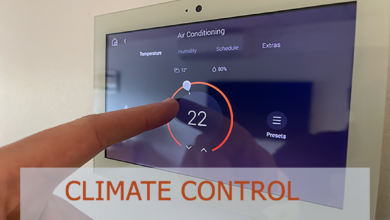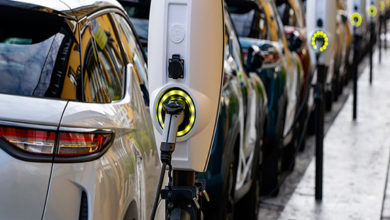Smart Grids Energy 2024

Smart Grid Energy 2024
A smart grid is an advanced grid system that uses digital technology to monitor, communicate, and manage the flow of electricity from production to consumption…
As the world changes rapidly The way we produce, distribute and use electricity is undergoing transformation. The basis for this change is the concept of a smart grid, but what exactly is a smart grid? And why is it important to the future of energy?
Different from traditional networks Often rigid and adaptive, SG is dynamic and proactive. This makes it possible to adjust and adapt in real time. This means that SG can respond to changes in electricity demand. Better integration of renewable energy sources and increase the reliability of the overall network
Electrical network improvements
The evolution from traditional grids to smart grids does not happen suddenly.
Smart Grid Features
To understand how smart grids work It is important to understand the key features that make up this advanced system.
Advanced Metering Infrastructure (AMI)
At the heart of SG is the Advanced Metering Infrastructure (AMI). AMI refers to the core of a smart meter. communication network and a data management system that enables two-way communication between facilities and consumers. A key part of AMI is that smart meters allow real-time monitoring of electricity usage. Helps consumers make informed decisions about energy use.
Distributed Energy Resources (DER)
Another important component of a smart grid is distributed energy resources (DER), which includes small-scale energy generation resources such as solar panels, wind turbines, energy storage systems, etc. DER plays an important role in SG by providing automated energy production. and reduce reliance on large centralized power plants located close to electricity.
Smart grid structure
Smart grids rely on a combination of sophisticated technology and data-driven methods to operate efficiently.
Communication technology in smart grid
A key factor in a smart grid is communication technology that enables real-time data exchange between network components, including wireless communications. fiber optic and powerline communications (PLC), which ensures data flows smoothly between utilities. network service provider and consumers…
Data management and analysis
In addition to communication Data management and analysis are also vital to SG’s successful activities. A sophisticated analytics platform with a wide range created by smart meters, sensors and other devices…
SG provides a framework to detect and respond to recovery faster than traditional networks. Reduce downtime and reduce the impact of power outages…
This is especially important in the face of natural disasters and other unexpected events. that may obstruct the power supply
Problems in SG operations
Although there are many advantages But there are several barriers to widespread smart grid deployment.
Cyber Security Concerns
This is because smart grids rely heavily on digital technology and communication networks. Cyber security is therefore a major challenge. SGs’ increased exposure makes them more vulnerable to cyberattacks. This may affect the strength of the electrical grid. and causing widespread power outages…
Enhanced cyber security measures including encryption Intrusion detection system and regular safety inspections Should be used to reduce these risks…
Another problem is the high initial costs involved in deploying smart grid technology. Massive investments are required to upgrade existing infrastructure. Install a smart meter and integrating renewable energy sources
Although the long-term benefits of SG may outweigh these costs, But obtaining the necessary funding and resources can be a barrier for many utilities and governments…
Integrating solar energy and wind energy
A key feature of a smart grid is its ability to integrate renewable energy sources such as solar and wind power. It can store excess energy generated during periods of high renewable energy production and release it when needed.
Demand response projects can also encourage consumers to reduce energy use during periods of low renewable energy production.
smart grid technology
Various cutting-edge technologies power smart grids to increase efficiency
READ MORE ABOUT WIRELESS POWER TRANSFER HERE
Support sustainability goals
Smart grids support broader sustainability goals by enabling the transition to low-carbon energy systems. They facilitate the integration of renewable energy. Promote energy conservation and promote efficient use of resources All of which contributes to a more sustainable future…
SG Initiatives in the United States
Several smart grid initiatives are underway in the United States, federal government, along with state and local governments. It has invested heavily in smart grid technology. To modernize the country’s aging energy infrastructure…
Projects such as the SGS Investment Grant (SGIG) have accelerated the adoption of smart meters. automatic grid system and integration of renewable energy throughout the country…
European smart grid development
Europe is also leading the way in developing smart grids. The EU has set ambitious targets for the adoption of renewable energy and grid modernization. And smart grids play a key role in achieving these goals. Countries such as Germany, the UK and Denmark are leading the way with innovative smart grid projects that emphasize sustainability and efficiency.
The project focuses on the integration of renewable energy. Increase the reliability of the electrical grid and empower consumers through real-time energy monitoring. The California experience highlights the potential of smart grids to transform the energy landscape.
Japan’s Smart Community Project
Japan’s Intelligent Community Professor
The role of artificial intelligence
Artificial intelligence (AI) definitely plays an important role in the future of smart grids.
Smart Grid and Electric Vehicles (EV)
Connecting electric vehicles (EVs) in a smart grid is another advancement.
Integrating EVs into the smart grid
Smart grids enable more advanced electrification by seamlessly integrating EVs into the power system. Electric cars can act as mobile energy storage units. This creates a bidirectional energy flow. This means that EVs can not only be charged off the grid. But it also supplies energy back. Create a balance between supply and demand. and help increase the stability of the electrical network.
Governance policy framework for smart grids
Successful smart grid deployment must be supported.
gathering together
As the world rapidly changes the way we create, distribute and use electricity, leveraging advanced technology. Smart grids will provide efficiency. reliability and increased sustainability This makes these grids a key component of the energy landscape of the future…
As the world moves towards a more decentralized, renewable energy system Smart grids will play an increasingly important role in ensuring that electricity is supplied in an efficient and environmentally friendly manner.
Enable dynamic pricing model And help reduce electricity bills through energy conservation…
What role does renewable energy play in a smart grid? To increase energy efficiency and reduce carbon emissions. Renewable energy sources such as solar and wind. It has been integrated into the smart grid to support sustainability goals…




